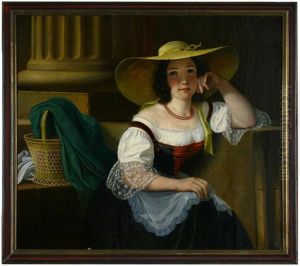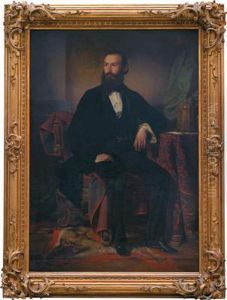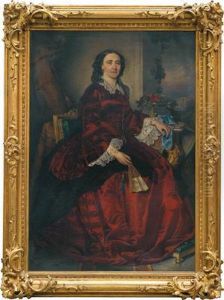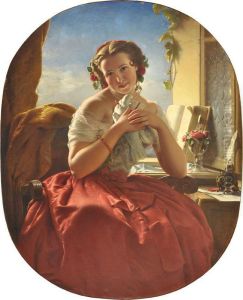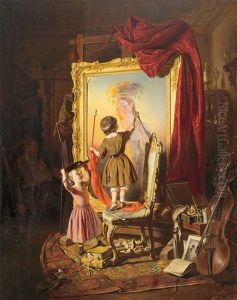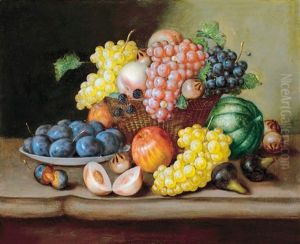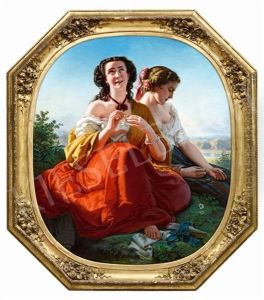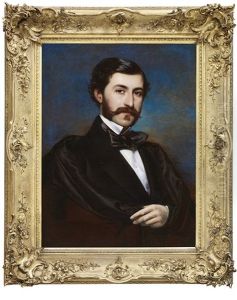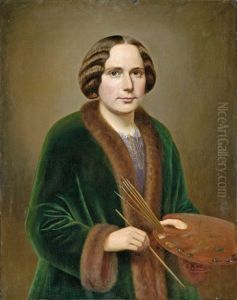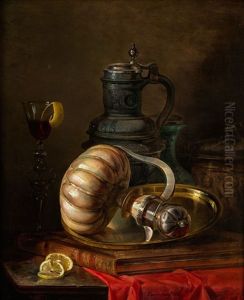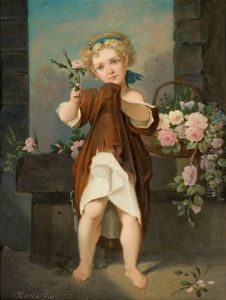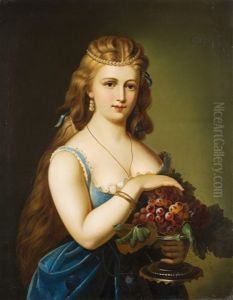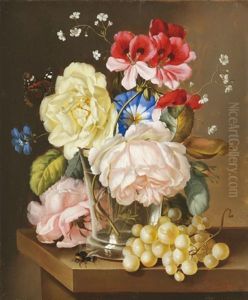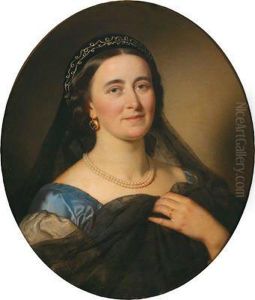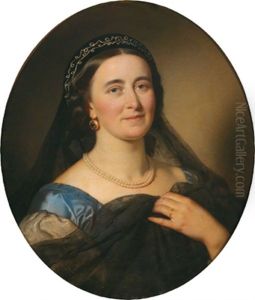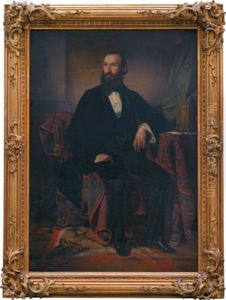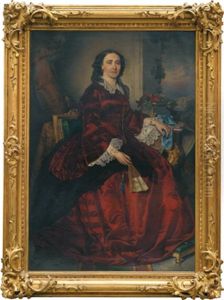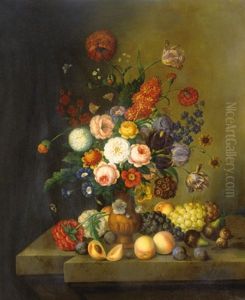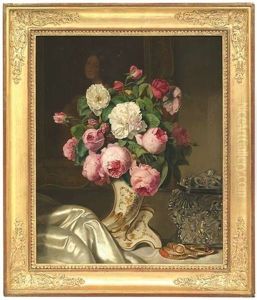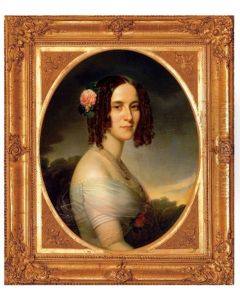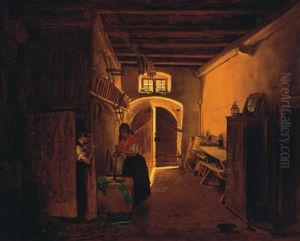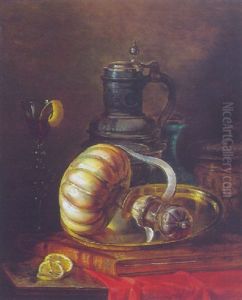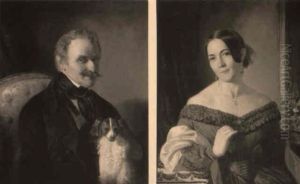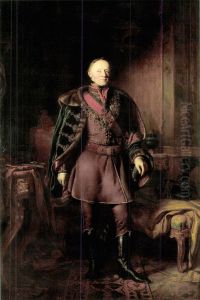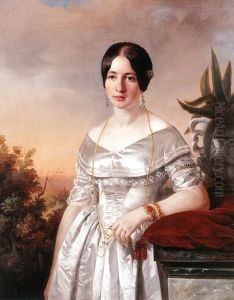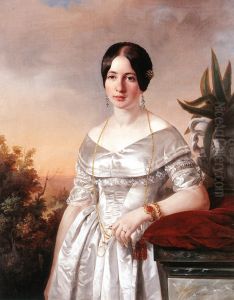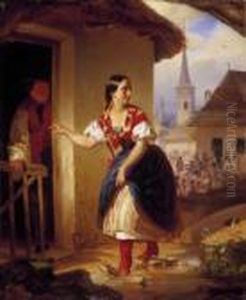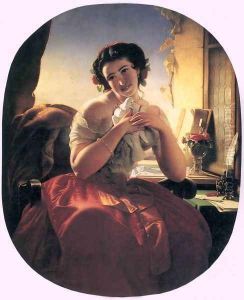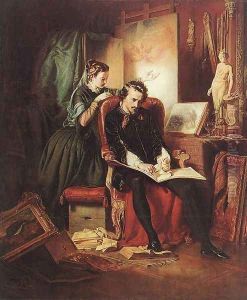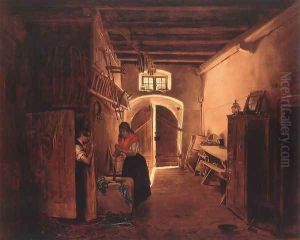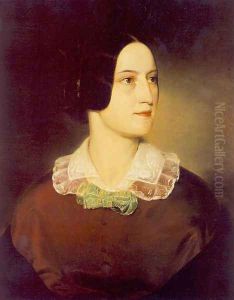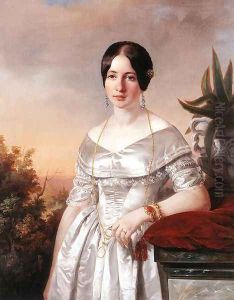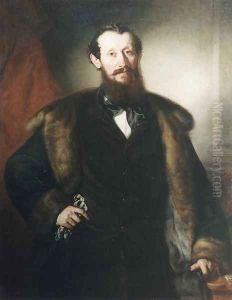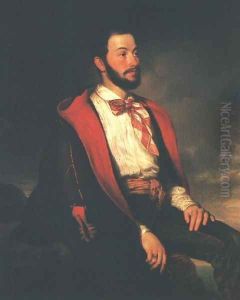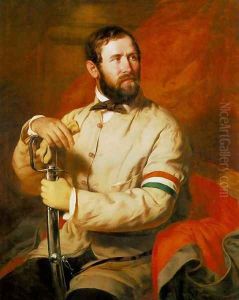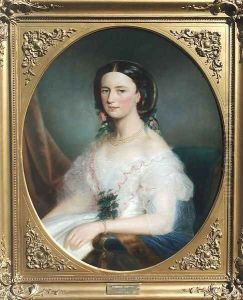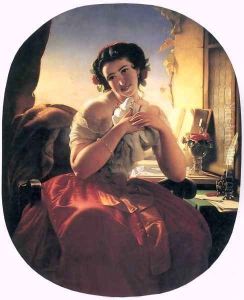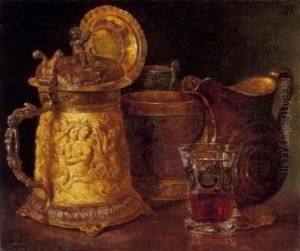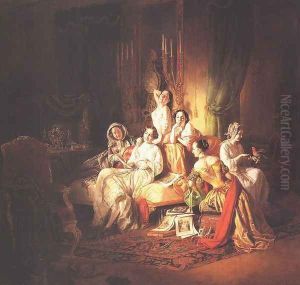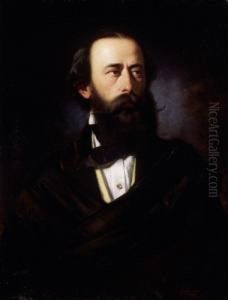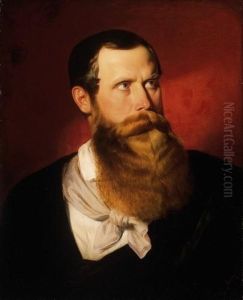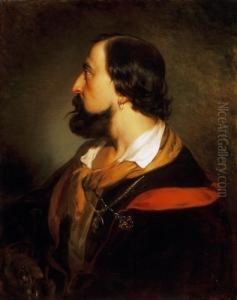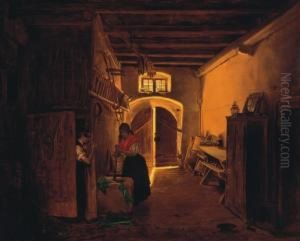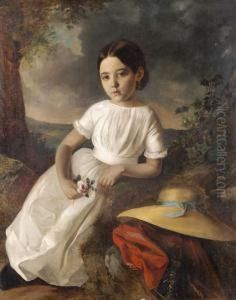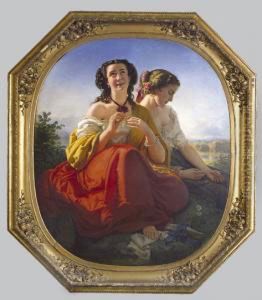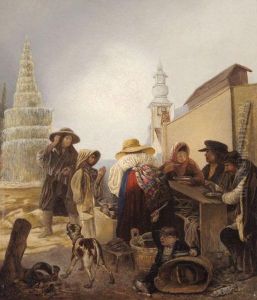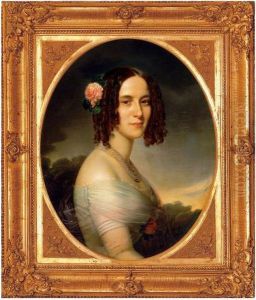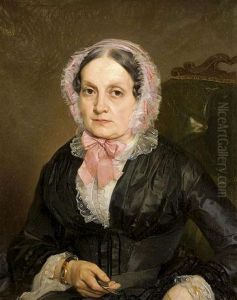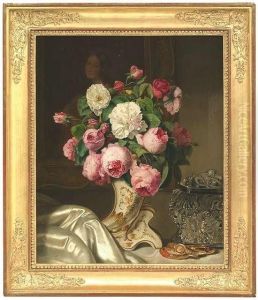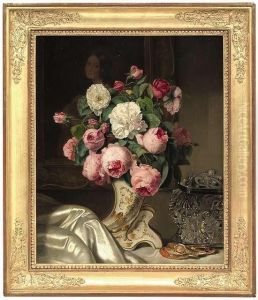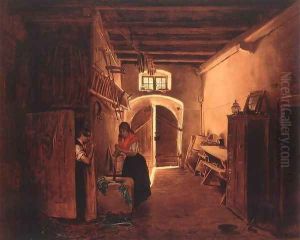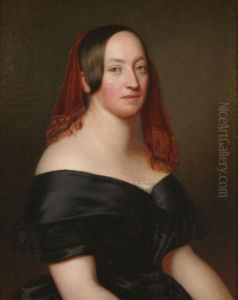Jozsef Borsos Paintings
József Borsos was a prominent Hungarian painter and photographer, known for his portrait art and contribution to early photography. Born on December 19, 1821, in Győr, Hungary, Borsos developed an interest in art at a young age. He studied at the Vienna Academy of Fine Arts, where he honed his skills in painting, particularly in portraiture, under the guidance of influential artists of the time.
During the 1840s, Borsos established himself as a respected portrait painter in Vienna. He was known for his detailed and realistic portrayal of his subjects, often depicting the Hungarian aristocracy and bourgeoisie. His works were characterized by their fine detail, rich color palette, and the psychological depth he managed to capture in his subjects' expressions.
In the 1850s, Borsos began to explore the emerging field of photography. He was particularly interested in daguerreotype, a process that creates a highly detailed image on a silvered copper plate. Borsos' fascination with this new medium led him to incorporate photographic techniques into his work, blending traditional painting with photography—a practice that was innovative at the time.
Borsos opened a daguerreotype studio in Pest (now part of Budapest), which quickly became one of the most sought-after studios in the city. His photographic portraits were prized for their clarity and the lifelike quality he was able to achieve, mirroring his achievements in painting. He continued to work as a painter and photographer throughout his life, contributing significantly to the cultural life of Hungary.
József Borsos passed away on July 19, 1883, in Baden bei Wien, Austria. His legacy is preserved in the Hungarian National Gallery and other institutions, which hold many of his portraits and photographic works. Borsos remains an important figure in Hungarian art history, celebrated for his mastery of portraiture and his pioneering role in the early development of photography in Hungary.
